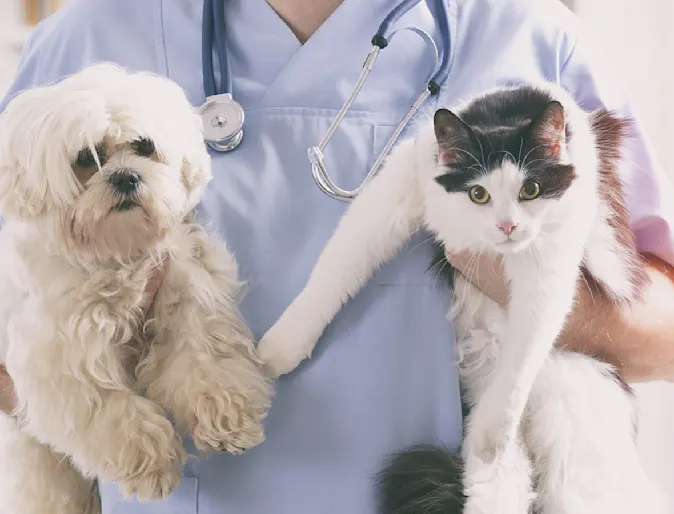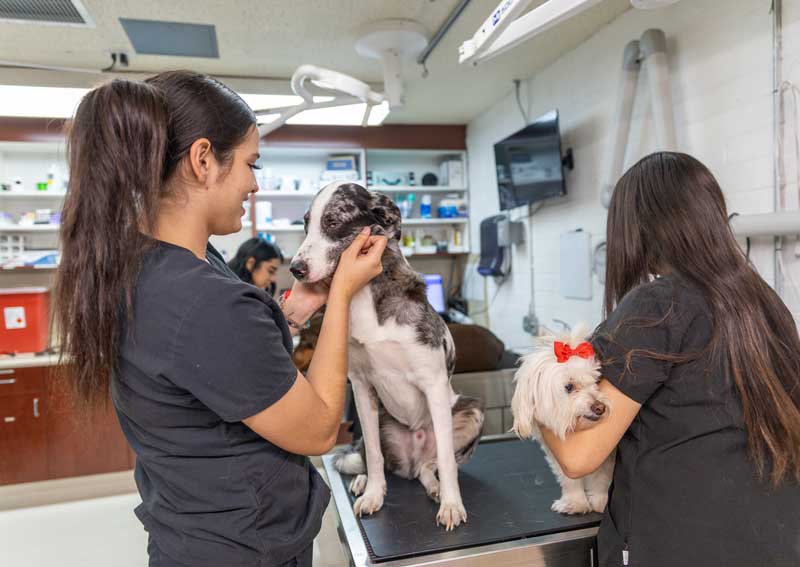Signs Your Dog Might Need canine tplo surgery: Vet-Approved Checklist
Signs Your Dog Might Need canine tplo surgery: Vet-Approved Checklist
Blog Article
Everything About Veterinarian Surgery: Understanding the Relevance of Specialist Take Care Of Your Pet dogs
Vet surgical procedure is a critical component of animal medical care. It encompasses various procedures, from regular elective surgical treatments to urgent treatments. Recognizing the complexities of these surgical treatments can assist pet dog owners make educated choices. The prep work, execution, and recovery phases are vital for ensuring the well-being of animals. With appropriate expertise, owners can navigate the complexities of veterinary treatment. What aspects should be thought about before an animal undertakes surgical treatment?
Kinds Of Vet Surgeries
When a family pet calls for medical intervention, comprehending the various kinds of vet surgeries can assist family pet owners make notified decisions. Vet surgical treatments can be extensively categorized into 3 primary kinds: elective, immediate, and emergency surgical procedures. Optional surgeries, such as spaying or neutering, are intended procedures that are not immediately lethal. Immediate surgeries, like those for foreign body elimination, need to be executed soon but are not serious in the moment. Emergency surgical procedures, such as those attending to serious trauma or interior blood loss, are critical and need prompt attention.Additionally, surgeries can differ in intricacy, ranging from minimally intrusive laparoscopic treatments to more considerable open surgical treatments. Each sort of surgical procedure lugs its own threats and recovery procedures. Recognizing these classifications enables pet proprietors to involve in purposeful discussions with veterinarians, resulting in far better end results for their precious family pets.
Planning for Your Pet dog's Surgical treatment
Getting ready for an animal's surgical procedure involves a complete checklist to ensure all basics are covered. Efficient communication with the veterinarian is essential for understanding the procedure and any kind of required pre-operative actions - animal emergency care bellingham. Furthermore, having clear post-operative treatment guidelines will certainly help owners provide the very best assistance for their recuperating family pets
Pre-Surgery List Essentials
Ensuring a smooth surgical experience for an animal requires careful preparation and attention to information. A pre-surgery checklist is crucial for pet proprietors to adhere to. First, verifying the set up surgical procedure day and time is vital. Owners need to likewise confirm that their family pet has actually not eaten according to the veterinarian's directions, normally for 8-12 hours before surgery. Gathering necessary medical records, consisting of inoculation background, is very important for the vet's evaluation. It is also advisable to prepare a comfy space at home for the pet's healing after surgical treatment. Finally, proprietors ought to have a prepare for transportation to and from the veterinary clinic, seeing to it that the pet is protected and comfortable throughout the trip. Complying with these actions can considerably improve the surgical experience.
Connecting With Your Veterinarian

Efficient interaction with the veterinarian is important for a successful medical experience for animals. Proprietors need to be prepared to discuss their pet dog's case history, consisting of any kind of pre-existing conditions, drugs, and allergies. This info assists the veterinarian examine risks and tailor the surgical strategy accordingly. Furthermore, animal owners ought to ask inquiries pertaining to the treatment, anesthetic, and anticipated end results to ensure they completely recognize the procedure. Making clear any questions can reduce anxiety for both the animal and the owner. It is additionally essential to connect any kind of behavioral changes or issues observed in the family pet leading up to the surgical treatment. Eventually, clear dialogue promotes trust fund and collaboration, ensuring that animals get the most effective feasible care during their surgical trip.
Post-Operative Treatment Directions
After going over the surgical treatment with the veterinarian, animal proprietors must concentrate on post-operative treatment guidelines to promote a smooth recovery for their pets. These directions generally consist of checking the medical website for indicators of infection, such as soreness or discharge. Pets might need to be kept one's cool and confined to protect against excessive activity that can interrupt recovery. Pain administration is vital, so owners should comply with the vet's assistance on administering medications. Furthermore, dietary constraints might be advised to avoid stomach trouble. Normal follow-up consultations are essential to guarantee appropriate healing and resolve any kind of problems. By adhering to these post-operative treatment directions, pet owners can significantly add to their family pet's recuperation and general wellness.
The Surgery Explained
The medical process for animals incorporates essential steps that assure their security and recuperation. Pre-surgery preparations are necessary for lessening risks, while post-operative treatment guidelines play an important function in advertising recovery. Recognizing these elements aids animal owners browse the surgical experience better.
Pre-Surgery Preparations
Before a family pet undergoes surgery, a number of vital prep work have to happen to ensure a secure and effective procedure. A comprehensive veterinary evaluation is vital to examine the family pet's general wellness and determine any type of prospective threats. This might include blood tests, imaging, or other diagnostics. The vet will certainly additionally discuss anesthesia choices tailored to the pet's particular needs. Additionally, pet owners are commonly advised to hold back food and water for a specified time before surgery to reduce the danger of difficulties throughout anesthesia. It is necessary for owners to supply a total medical history, consisting of any type of drugs or allergies, making certain the surgical team has all essential info. Correct interaction and adherence to pre-surgery guidelines can substantially enhance the result of the procedure.
Post-Operative Treatment Guidelines
Proper post-operative care is essential for making certain a family pet's healing complying with surgical treatment. After the treatment, animals ought to be kept track of very closely for any indicators of complications, such as extreme blood loss, swelling, or uncommon actions. It is very important to adhere to the veterinarian's guidelines regarding drugs, consisting of painkiller and anti-biotics. Family pets need to be kept in a quiet, comfy atmosphere to decrease stress and anxiety and promote recovery. Limiting task is important; short, leashed walks might be necessary, but leaping or running ought to be stayed clear of. Regular follow-up appointments need to be set up to evaluate the recovery process. Furthermore, the medical site should be maintained tidy and completely dry, with any indicators of infection reported to a vet quickly. Sticking to these guidelines enhances healing results.
Anesthetic and Pain Administration
Reliable anesthesia and pain monitoring are vital elements of vet surgical procedure, ensuring that animals stay comfy and risk-free throughout the treatment. Vets examine each pet dog's private requirements, thinking about elements such as age, weight, health status, and the type of surgery being performed.Anesthesia procedures generally include a mix of pre-anesthetic medications, induction agents, and inhalant anesthetics, enabling for precise control over the pet's degree of awareness. Surveillance during surgery is crucial; vets continually observe essential signs to resolve any kind of possible complications promptly.Pain monitoring strategies might entail opioids, non-steroidal anti-inflammatory drugs (NSAIDs), and anesthetics, customized to the pet dog's details situation. This complex technique helps decrease discomfort and promotes a smoother surgical experience. By focusing on effective anesthesia and discomfort monitoring, veterinary professionals enhance the overall well-being of family pets going through surgical treatments, ensuring they obtain the greatest requirement of treatment.
Post-Operative Treatment and Recuperation
Complying with surgical treatment, the focus shifts to post-operative treatment and recovery, which is important for ensuring a family pet's secure return to regular activities. During this duration, pet dogs need a quiet, comfortable setting to aid healing. Proprietors should closely check their pet dogs for any type of indicators of discomfort or unusual behavior.Veterinary guidelines typically include details directions related to medicine administration, wound treatment, and dietary adjustments. It is essential to comply with these recommendations to reduce difficulties and advertise healing. Animals might require to be limited from vigorous tasks, such as running or leaping, throughout their recuperation period (animal emergency care bellingham).Regular follow-up visits with the veterinarian enable for monitoring of the animal's progress and timely adjustments to the care plan. Offering emotional support and companionship can likewise enhance a family pet's recovery experience, assisting to ease anxiety and stress and anxiety. On the whole, persistent post-operative treatment plays a substantial duty in achieving a successful recuperation
Recognizing Complications After Surgery
How can pet proprietors recognize problems after surgical procedure? Recognition of particular indications is crucial for making certain the health of pets throughout healing. Typical indications consist of excessive swelling, soreness, or discharge at the medical site, which might represent infection. Additionally, persistent pain, suggested by whining or hesitation to move, must trigger instant attention. Adjustments in hunger or water intake can also show problems; a reduction in these habits may signal pain or distress.Moreover, pet owners must monitor their pet dogs for any type of unusual habits, such as sleepiness or difficulty breathing, as these can be indications of serious problems. Throwing up or looseness of the bowels complying with surgical treatment might need immediate vet examination. Identifying these issues early can considerably affect a pet dog's healing procedure, stressing the significance of caution and timely interaction with a vet for any type of worrying signs and symptoms.
The Role of Vet Experts in Surgical Treatment
Vet professionals play an important role in making sure the safety and security and success of surgeries for animals, especially adhering to surgery when keeping an eye on and treatment are paramount. These professionals include veterinarians, veterinary technicians, and support team, every one of whom contribute specialized skills to the surgical process.Before surgical treatment, vets perform detailed evaluations to examine the pet dog's wellness, guaranteeing that any kind of underlying conditions are taken care of. During the procedure, the medical group supplies anesthetic, preserves clean and sterile environments, and monitors key indications, all important for lessening risks.Post-operative treatment is similarly considerable; vet specialists observe for problems, handle pain, and overview proprietors on recuperation techniques. Their competence enables them to identify very early signs of distress or infection, guaranteeing prompt intervention. Inevitably, the collaborative initiatives of veterinary professionals in surgical treatment foster a secure atmosphere, promoting the wellness of pet dogs throughout the surgical trip.

Often Asked Concerns
How Do I Choose the Right Vet Surgeon for My Animal?
Selecting the ideal vet doctor includes investigating qualifications, reviewing testimonials, and reviewing the center's environment. It is vital to mirror on the surgeon's experience with details procedures and their communication design when choosing.
What Prevail Misconceptions About Veterinarian Surgeries?
Typical false impressions concerning veterinarian surgical treatments consist of ideas that they are always risky, unneeded, or just for emergencies. Several pet owners underestimate the benefits of precautionary treatments and the skill included in vet medical care.
Just How Much Will My Pet dog's Surgical treatment Price?
The price of an animal's surgical treatment can 24 hour vet bellingham differ considerably based upon factors such as the kind of procedure, the vet's experience, and geographical location (24 hour vet bellingham). Normally, expenditures vary from a couple of hundred to several thousand dollars

Can My Animal Eat Before Surgical Treatment?
Prior to surgical procedure, it is usually suggested that pets avoid from consuming for a details duration. This fasting aids reduce the danger of issues throughout anesthesia. Owners ought to consult their veterinarian for exact guidelines tailored to their animal's needs.
Suppose My Pet Has Pre-Existing Health Issues?
When a pet dog has pre-existing health conditions, it's crucial for the veterinarian to examine these aspects prior to surgery. This examination guarantees appropriate safety measures are taken, lessening dangers and enhancing the animal's overall safety during the treatment.
Report this page